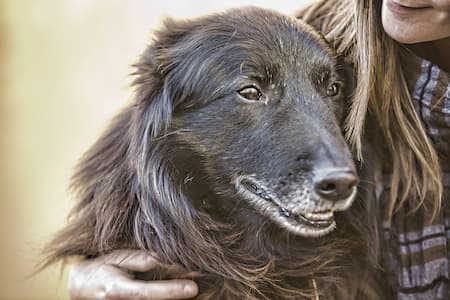Why It’s Important to Keep Your Dog’s Teeth Clean in Denver

Many pet owners don’t know how important it is to keep their dog’s teeth clean. If you have a Denver pet, you want them to live long and healthy lives. Tooth decay and gum disease can make your dog miserable and can lead to other, more serious health issues including death by infection.
So if you’re asking, “Why should I brush my dog’s teeth?” the answer is, “Because you love your pet and they need it.” A dog’s life span is generally from ten to thirteen years on average. At about four years of age, your dog can begin showing signs of gum disease and other unhealthy mouth problems.
Just like human teeth, food and other contaminants get caught in between gums and teeth. If left, the substances decay and this action will cause tooth decay as well. Some signs your dog may have unhealthy teeth, tongue, mouth, or gums are:
- Bad breath
- Red or white gums
- Swollen gums
- Excessive drooling
- Tumors
- Cysts under the tongue
- Loose teeth
- Build up on teeth
- Receding gum line
- Tooth loss
- Sensitivities when eating
There are several mouth disorders common for dogs which are mostly the same in humans:
- Periodontal Disease – a very painful infection between the tooth & gum
- Gingivitis – inflammation of the gums caused by plaque or tartar buildup
- Halitosis – bad breath caused by bacterial growth in the mouth or trapped decaying food
- Swollen gums – a result of stuck on food or particles caught between teeth at the gum line
- Proliferating Gum Disease – the overgrowth of the gum onto the teeth, an inherited condition of some breeds
- Mouth Tumors – look like lumps in the gums, must be surgically removed
- Salivary Cysts – occurs under the tongue or corners of the jaw. Must be drained and salivary gland removed
- Canine Distemper Teeth – adult teeth appear looking eroded and can often decay, tooth must be removed
Making sure you regularly brush your dog’s teeth is the preventative measure to most all of these common issues. You should also give your dog plenty of chew toys, dog biscuits, and other things that are healthy for them to chew on. Also, check your pet’s mouth at least once a week by lifting up their lips and examining the gums and teeth.
You can get tooth brushing kits for your dog at any pet store. Your vet also has supplies available. You can also use a dab of baking soda on a wet tooth brush.
Don’t ever use Fluoride with dogs under six months of age because it can interfere with their enamel formation. Also, don’t ever use human toothpaste because it will irritate your dog’s stomach. Special mouthwashes formulated for dog use are available instead.
When brushing your dogs teeth, take these steps:
- Remember to be gentle yet thorough
- Use a toothbrush meant for dogs. Human toothbrushes are often too big and can scruff surfaces or cause bleeding if corners or edges poke.
- Put the brush at an angle of 45% to the teeth and clean in small, circular movements.
- Working on one area of the mouth at a time, lift lips as necessary and continue.
- Concentrate on the outer side of the teeth next to the gums because that’s where most plaque will build.
- Give each tooth a final downward stroke to remove the plaque.
- Don’t fight your dog if they resist cleaning the inside part of the teeth, tartar is limited there.
- Repeat two to three times per week.
You want your pet to live a long, happy, and healthy life and you do a lot to ensure that. But if you’re neglecting your dogs teeth, your pet will have problems that can limit his or her life or make them miserable for the rest of it.
Remember, dogs don’t have fifty years of keeping their teeth like humans do. With a shorter life cycle, we want to ensure that every moment is a positive experience for them. Brushing regularly provides them with the proper care they deserve.
Contact Dog Ventures! Your Denver Dog Trainer, can transform your dogs’ behavior
Call Us: 303-929-7759 Need Training? Click Here

